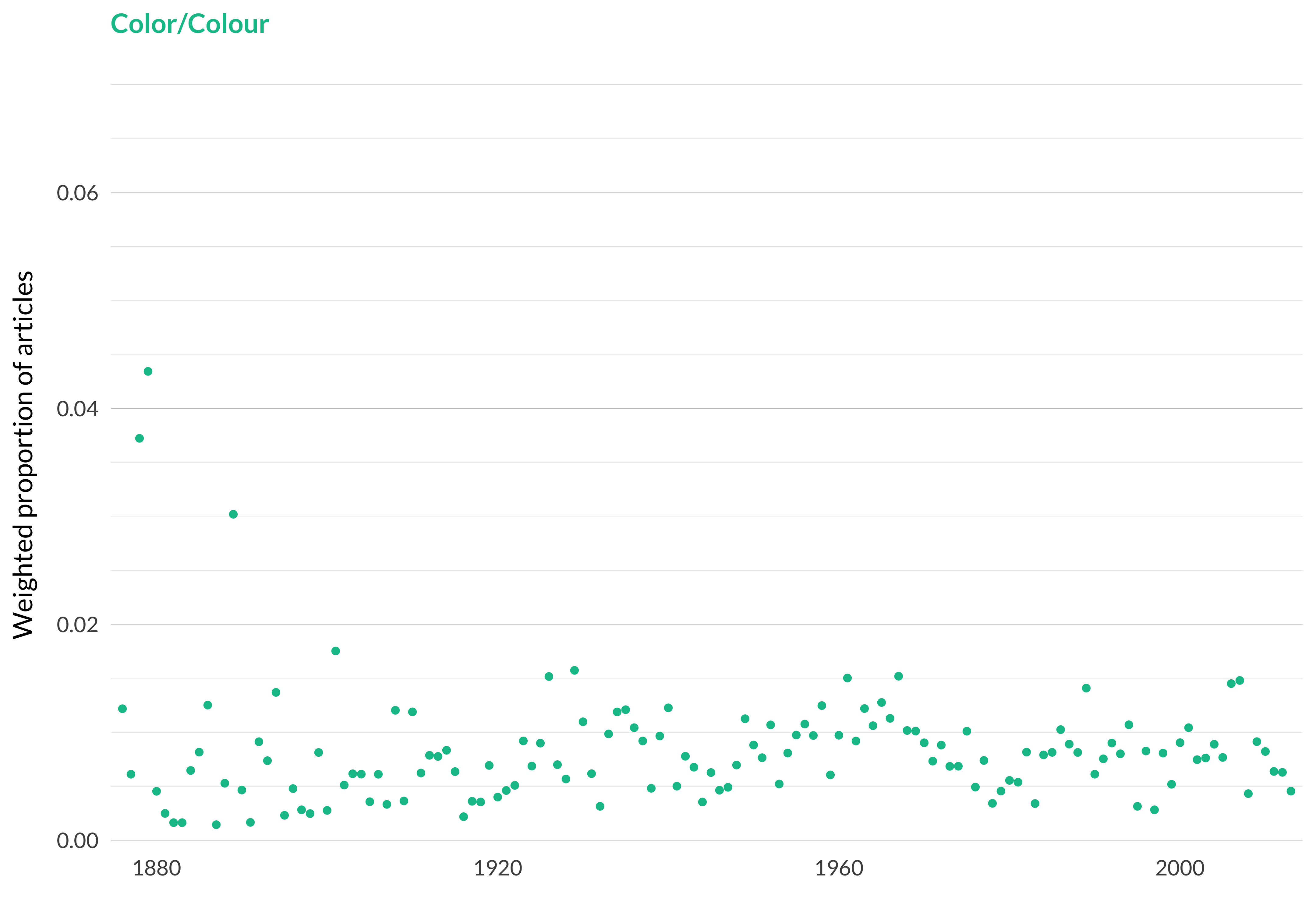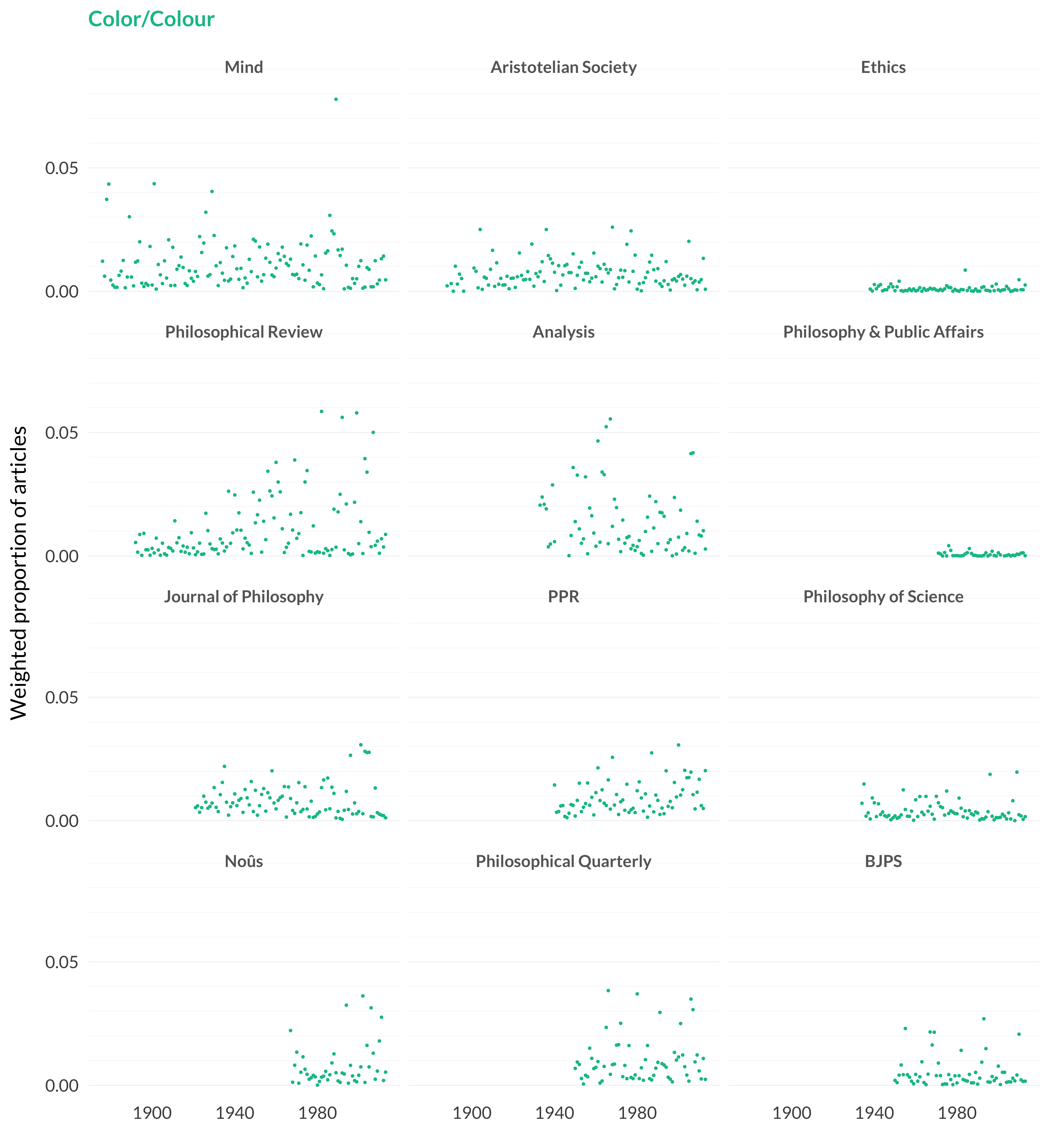2.40 Color/Colour
Category: Philosophy of Mind
Keywords: blue, green, colors, colours, yellow, color, colour, patch, red, secondary, orange, redness, qualities, quality, looks
Number of Articles: 247
Percentage of Total: 0.8%
Rank: 64th
Weighted Number of Articles: 268.7
Percentage of Total: 0.8%
Rank: 62nd
Mean Publication Year: 1975.5
Weighted Mean Publication Year: 1969.2
Median Publication Year: 1980
Modal Publication Year: 2007
Topic with Most Overlap: Perception (0.0549)
Topic this Overlaps Most With: Perception (0.0325)
Topic with Least Overlap: Crime and Punishment (0.00011)
Topic this Overlaps Least With: Marx (0.00035)

Figure 2.98: Color/colour.

Figure 2.99: Color/colour articles in each journal.
Comments
Just like the previous topic, color/colour shows a very constant pattern over time. There are some outlier measures in the early years, when there are papers that are probably just as much psychology papers as philosophy papers by twentieth-century standards). But otherwise it stays at around 0.5–1 percent per year.
When I was building a lot of models to see what patterns turned up repeatedly, a topic on color/colour turned up reliably but not uniformly. This model is about as paradigm an instance of the topic as one might hope to see. It has articles from the nineteenth century through the twenty-first century and multiple articles near the top of the characteristic articles table by Edward Wilson Averill and Mark Eli Kalderon. That feels right to me, but not all of the models agreed. It isn’t too hard to build a model were some of the early papers get rolled in with the other psychology papers, other papers get lumped into the broader perception topic, and yet others get put in with metaphysics. But that seemed wrong; this is a distinctive and important topic.
It is useful to see how much it has (and has not) changed over time. The model gives the highest probability of being in this topic to this discussion note by Grant Allen (1879). It’s a speculative piece about what recent experimental results might say about the structure of cones and their arrangement inside the eye. This kind of piece doesn’t feel out of place in Mind circa 1879, and it wouldn’t feel out of place in present-day philosophy, but it would very much feel out of place for much of the twentieth century.